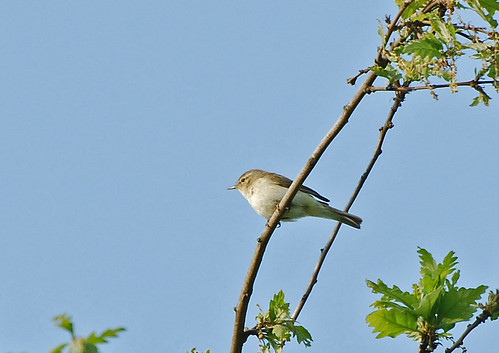Summer was late arriving in 2013. The weather was cold and wintry up until June and that had a profound effect on the wildlife. Breeding seasons were knocked out of kilter by it, and the numbers of many species have suffered as a result. But it seemed that once summer did arrive the wildlife got very busy very quickly to make up for lost time.
The skyline on my regular dog walking route is dominated by a magnificent poplar tree which makes a wonderful sound when the wind blows. It’s right on the pathway where many walkers pass every day and there is a bench underneath it which folk sit on occasionally. But despite all the human activity in such close proximity a pair of kestrels (Falco tinnunculus, Dansk: tårnfalk) were brave enough to build a nest in it about 20-25 feet up.
 Kestrel fledgling taking it easy and apparently unfazed by me pointing a telephoto lens at it
Kestrel fledgling taking it easy and apparently unfazed by me pointing a telephoto lens at it
I posted about the adults taking up residence in the poplar in August last year. Their decision to nest in this exposed location paid off in spades as the kestrel pair fledged three youngsters who could be seen in around the poplar into the later months of 2013.
 And a pair of the fledglings sheltering in the poplar
And a pair of the fledglings sheltering in the poplar
I made a point of not lingering too long around the poplar to avoid disturbing the birds, but because of the constant human presence there I think they were relaxed about me taking pictures as long as I didn’t try to stay too close for too long.
All the pictures in this post were taken on one summers evening stroll in July, and as well as the kestrels there was lots of other wildlife.
Also breeding in the field adjacent to the poplar tree were numerous skylark (Alauda arvensis, Dansk: sanglærke). I’ve been trying unsuccessfully to get photographs of skylarks for a long time but on this particular evening this one perched on top of a low bush and sang for England. I called the dog to heel and using an adjacent bramble as a shield I crawled as close as I could, which was less than 10m in the end, and poking my lens though the bramble I finally got some pictures:
 A singing skylark lit by the low, late evening sun
A singing skylark lit by the low, late evening sun
The resident corn buntings (Emberiza calandra, Dansk: bomlærke ) usually vacate the fields around Histon with the harvest at the beginning of August, but in 2013 they stayed much later. I don’t know if that was coincidence, because there was still cover in one of the fields, or if it was a result of the enforced delay in the breeding cycle due to the cold spring weather. But they were here in much greater numbers and much later in the year than normal. According to the British Trust for Ornithology the corn bunting is so sedentary that individulas only 30km apart sing in different dialects, but I’d love to know how that was discovered.
 Corn bunting on a regular perch in the late evening sunshine
Corn bunting on a regular perch in the late evening sunshine
Corn bunting are red listed in the UK due to rapid decline in numbers as a result of habitat destruction for agriculture. Despite that, and decreasing numbers in Central Europe for the same reason, it’s not considered under threat as a species in mainland Europe… yet.
Another songbird which is also red listed in the UK, also as result of rapidly declining numbers, is the yellowhammer (emberiza citrinella, Dansk: gulspurv).
 Male yellowhammer with his striking yellow head plumage
Male yellowhammer with his striking yellow head plumage
The yellowhammer has suffered catastrophic decline in numbers over the last few decades and over the last 2-3 years I’ve noticed the numbers in my locality seem to be on the wane too. I think it hasn’t been helped here by the farmer who recently took a flail to all the hedgerows and a lot of the drainage ditches and stripped most of the winter cover and food away. I just don’t see the sense it that – it wasn’t impinging on the crops or impeding access to farm machinery. Seems completely pointless to me.
Yellowhammer and corn bunting are both species of bunting and prefer arable farmland, but due to the intensive nature of arable agriculture and the resulting lack of seed, either natural or crop, both species are under dire threat in the UK. I’ve seen evidence to show that rates of decline can be slowed by changes in farmland management such as set aside or organic cropping, but I think attempts to conserve need to be applied in more holistic fashion to ensure survival of the wildlife.
One species which appeared to be abundant last summer was the hare. They’ve been ever present on any summers evening stroll across the fields in 2013. And I’m still seeing them through the winter too.
And as I headed home there was a spectacular sunset:
…one of many through the summer of last year.

































